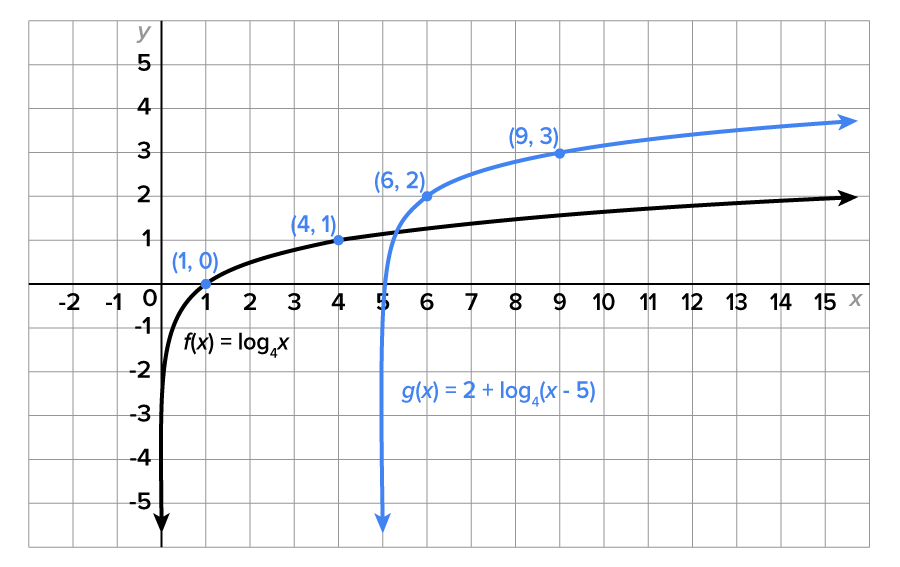Table of Contents |
Throughout this course, we have applied several different translations to a function and observed the transformations of the corresponding graph. When applying these translations to logarithmic functions, we will also observe how the properties of a logarithmic function are affected.
EXAMPLE
Consider the function
 we know the following:
we know the following:
 ” tells us that the graph is shifted 5 units to the right.
” tells us that the graph is shifted 5 units to the right. 
 and
and  on the graph of f correspond to the points
on the graph of f correspond to the points  and
and  on the graph of g, respectively.
on the graph of g, respectively.
 is 5 units to the right of
is 5 units to the right of  which is
which is 
 and
and 
Now that we have applied transformations to some logarithmic functions, let’s see how these transformations affect the properties of logarithmic functions.
If  and
and  recall that the domain of
recall that the domain of  is
is 
In other words, logarithms can only be applied to positive numbers, meaning that the argument of a logarithmic function must be positive.
Now consider the function  which we graphed earlier. Since the argument of this function is
which we graphed earlier. Since the argument of this function is  the domain is the set of numbers for which
the domain is the set of numbers for which 
Solving for x gives  or using interval notation,
or using interval notation,  Recall also that the vertical asymptote of
Recall also that the vertical asymptote of  is
is 
In general, shifting a logarithmic function horizontally will have an effect on the domain of the function as well as the vertical asymptote. Notice that they are related.
 is the set of values for which the argument, x, is positive. The vertical asymptote of f is
is the set of values for which the argument, x, is positive. The vertical asymptote of f is 
 then the vertical asymptote of the function is
then the vertical asymptote of the function is 

EXAMPLE
Determine the domain, range, and vertical asymptote of

|
Set the argument greater than 0. |
 
|
Solve the inequality for x. |

|
Write using interval notation. |




 and the domain shifts from
and the domain shifts from 
SOURCE: THIS TUTORIAL HAS BEEN ADAPTED FROM OPENSTAX "PRECALCULUS” BY JAY ABRAMSON. ACCESS FOR FREE AT OPENSTAX.ORG/DETAILS/BOOKS/PRECALCULUS-2E. LICENSE: CREATIVE COMMONS ATTRIBUTION 4.0 INTERNATIONAL.